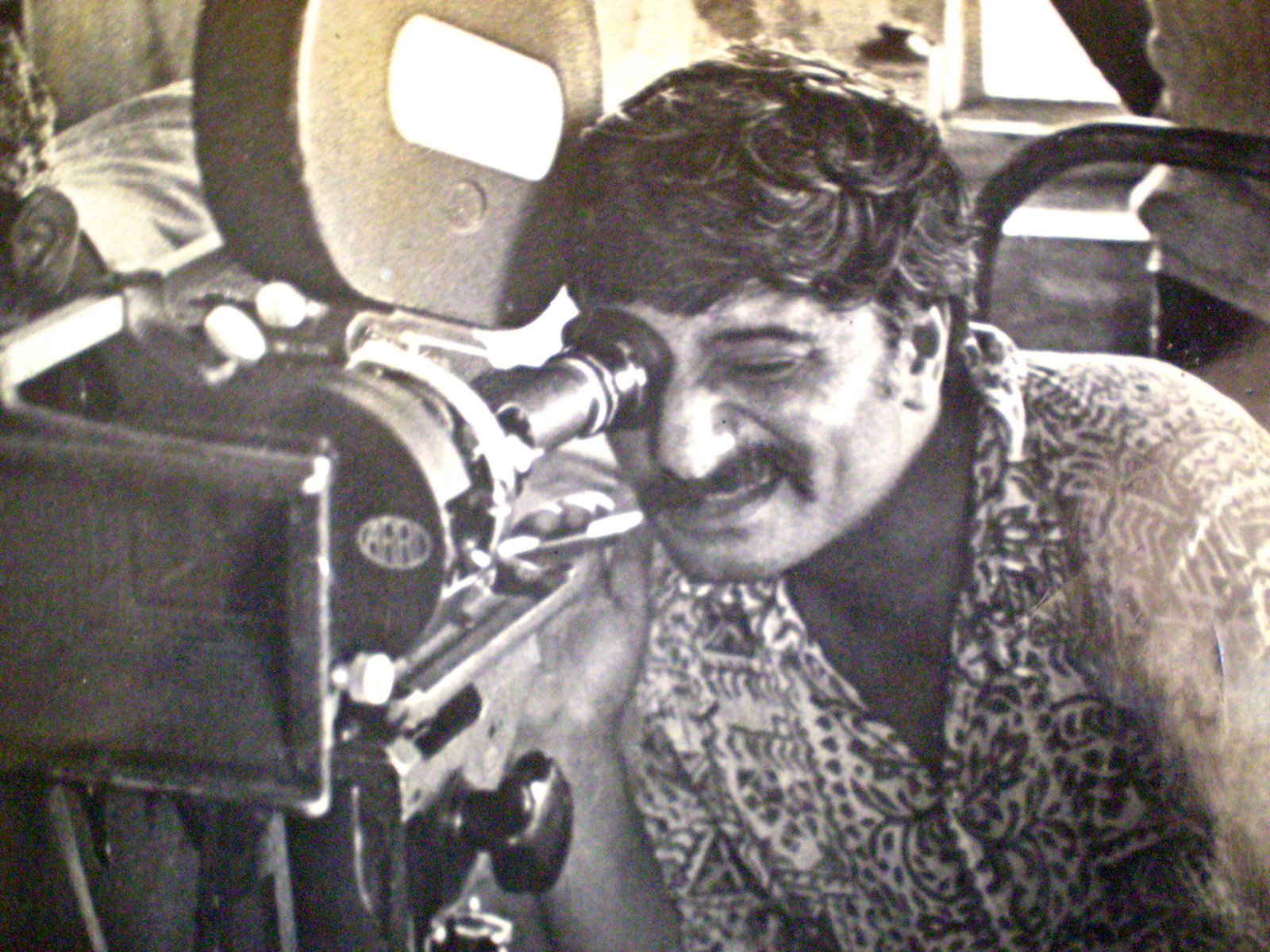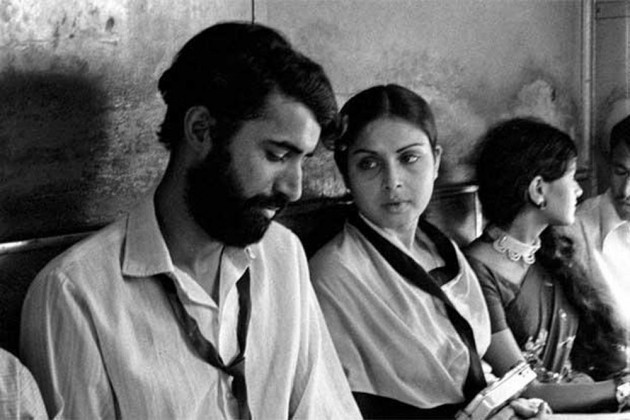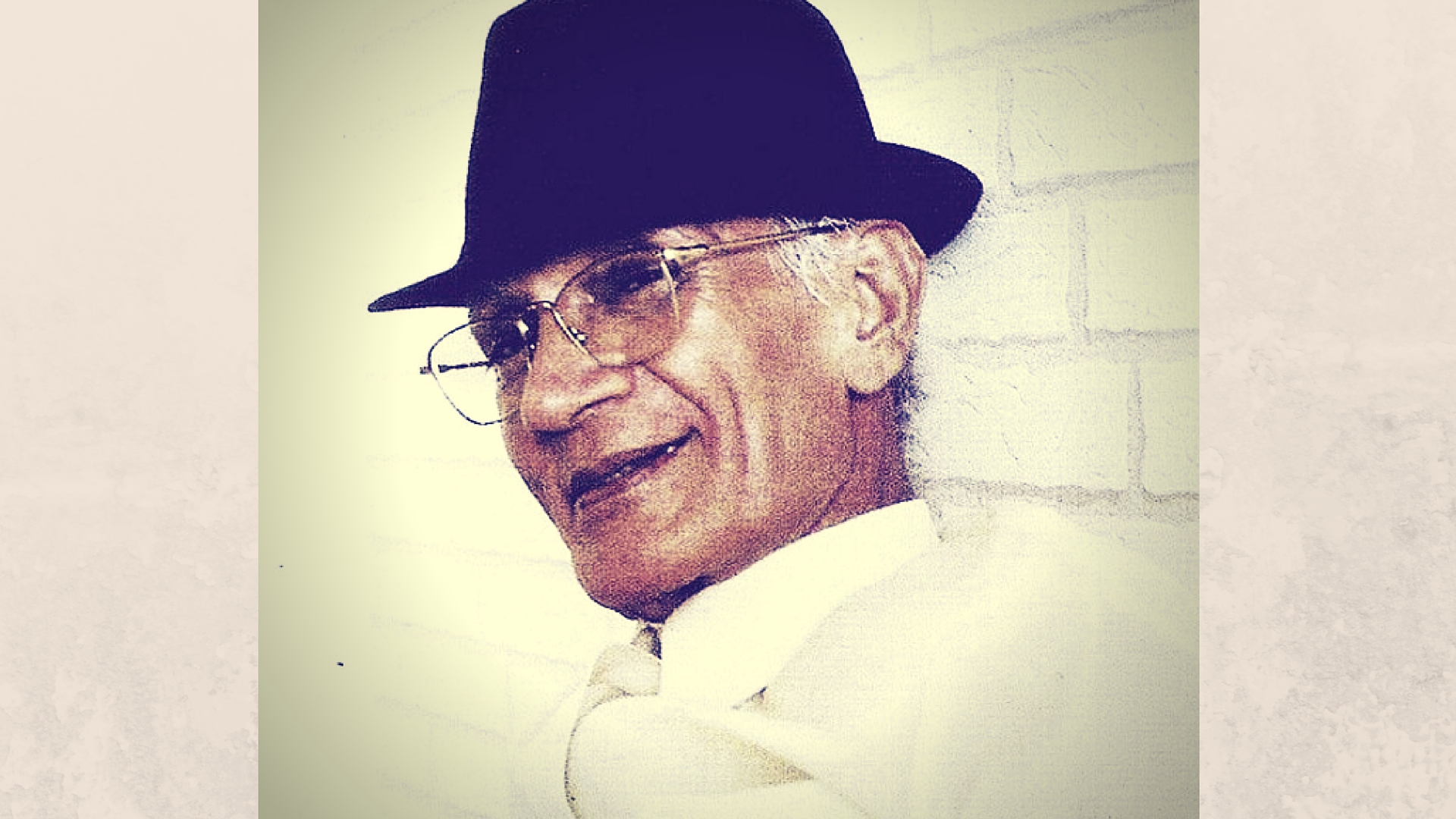When a writer, a painter, a sculptor, a musician, or a filmmaker leave the podium in a hurry, a quite untimely exit for his or her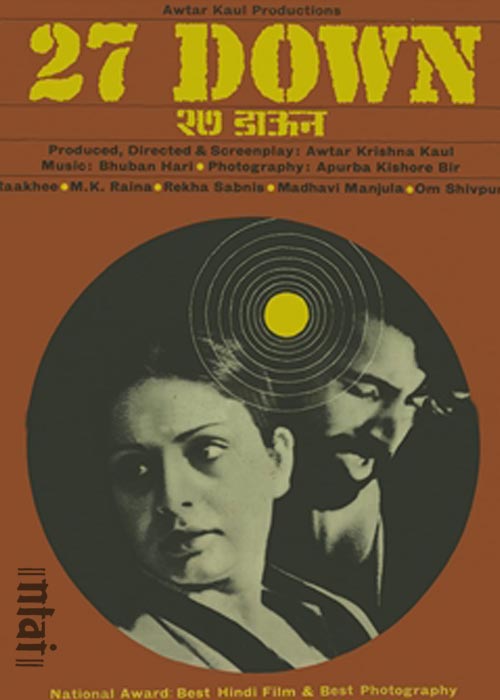 artistic endeavors, especially after coming up with a path-breaking work in the respective field, the afterlife of that work of art undergoes tangential twists and myriad turns.
artistic endeavors, especially after coming up with a path-breaking work in the respective field, the afterlife of that work of art undergoes tangential twists and myriad turns.
The very attribute that it has to sustain the remaining years of ferocious criticism, inflating appreciation, more dangerously, the inexorable negligence, and an eventual oblivion, makes its life odd and insecure. When it comes to filmmaking and filmmakers, the process becomes more relentless as the preservation, visibility and screening opportunities of the movie depends on a lot of factors and forces. No other feature film in the history of Indian Cinema has been lived that tiresome, lonely life as the 1974 movie, 27 Down, with its director Awtar Krishna Kaul passed away in a shocking accident soon after he wrapped up his debut feature.
Awtar left nothing behind except his movie in his hasty departure, not even a Wiki page in English, for the digital generations to come to google his legacy and works. The man made his mark through a single movie, which he had written, directed and produced, that mark being under a perpetual threat of wiped away by negligence.
Born in 1940 in Kashmir, Kaul finished his graduation in science at the Punjab University in the early 60s, and his life took the wildest turn when he decided to pursue a filmmaking course in the US. Kaul enrolled in the Institute of Film and Television Technology at the City University of New York, where he was exposed to every nook and corner of filmmaking. American Cinema was undergoing a chaotic transformation in the sixties and the young Kaul had more than enough to absorb and shape his aesthetic and philosophic foundations.
The cultural scenario in the US was a melting pot of radical thoughts, fashion, rock ‘n’ roll, civil rights movements, and the thriving underground cinema movement in Hollywood. Experimental filmmakers like Stan Brakhage, Maya Daren, Andy Warhol, Kenneth Anger, and Jonas Mekas bombarded the Hollywood cultural fortress with stunning movies that confronted with the mainstream conventions. There were psychedelic and counterculture connotations in the air and Kaul couldn’t insulate himself from the wind that shook the foundations.
Nevertheless, as a filmmaker, he was more attracted towards the sensibilities of French filmmaker Robert Bresson and Danish filmmaker Carl Dreyer. The stark nakedness of human soul and the intensity and immediacy with which these auteurs captured and presented it attracted Kaul and carried over visible marks of influence into his first feature. Kaul had made three short movies as part of his curriculum, which were lost or cannot be recovered from oblivion. He had bagged his first award; the best auteur of documentary films, for his documentary, The Golden Year, which, needless to say, bears the tag “lost or cannot be recovered”.
Kaul worked as an assistant director with filmmaker James Ivory in the 1970 Indo-US co-production, Bombay Talkie, one of nine flicks Indian actor Shashi Kapoor made with Merchant Ivory Productions. After the explosive cultural exposure in the US and the hands-on training on the sets of Bombay Talkies, the obvious next step for Kaul was to make his first feature in India. The timeline was in his favor as the mainstream and art house variants of Indian Cinema were undergoing a radical change. Young people with never-seen-before approaches revolutionize both the streams and there was a kind of awakening. Indian viewers were slowly accustomed to the new wave sensibilities and artistic variety of entertainment after new batches from Film and Television Institute, Pune invaded Bollywood and other regional industries with their sharpened aesthetics and craftsmanship. Kaul landed in a transitional epoch and after a struggling phase, he managed to get the nod from the National Film Development Corporation (NFDC) to co-produce his debut movie.
Kaul started rolling his debut feature, 27 Down, in the early 70s and he chose buzzing Mumbai as his canvas. He roped in the best talent available at that time like, M.K. Raina, a NSD graduate with vast theatre experience, Rakhee Gulzar, an established star in Bollywood by then, Sadhu Mehar, an untouched talent in Oriya cinema, Om Shivpuri, another talented NSD trained actor, Rekha Sabnis, a regular face in the Indian Parallel cinema movement, and Sudhir Dalvi, a promising young talent from Bollywood. The movie was an adaptation of Ramesh Bakshi’s Hindi novel Athara Sooraj ke Paudhe. Kaul handpicked Hari Prasad Chaurasia and Bubaneshwar Misra, who had known as Bhupan Hari together at that time, for composing an invoking score for the movie. Prolific debutante Apurba Kishore Bir joined the squad as cinematographer. In 1973 Kaul and his crew started working on 27 Down with Bombay and Varanasi as the main locations.
John Abraham, Portrait Of A Lucid Messiah
27 Down opens up with a painful monologue that throws a question, “Has another bridge come? Seems like it”, as we see a drained young man lying in the berth of a moving train. The viewers are introduced into the two import motifs, trains, and journeys, at once and as his monologue progresses, a complex personal world of Sanjay, a young man from a typical middle-class family, unfolds. He reminisces about his fruitless journeys that crossed many bridges and yet, didn’t reach him anywhere. Kaul underlines the personal and existential hues of his movie with this opening sequence and a silent, rhythmic and philosophic rendering of Sanjay’s life through stark and contrasting black and white images follows.
As the narrative unfolds through contemplative rhythm and black and white tonal shifts, the power equations between Sanjay, played by Raina and his father, a dedicated loco pilot in Indian Railway and a tyrannical dad, played by Om Shivpuri, become more visible. Kaul organizes his narrative as long pieces of past incidents that are connected with depressive monologues of Sanjay. Through numerous flashbacks in a linear order, Sanjay’s life unfolds with all its serendipity and vulnerability. As Sanjay mentioned at the beginning of his monologue, his father always overshadows his son’s decisions and the movie, or in other words, Sanjay’s timeline is driven by his loco pilot father, just as he drive a locomotive engine. The labyrinthine fortress of emotions in the movie takes shape when his father’s decisions restrict Sanjay in a parallel and straight dynamics of the railroad. Sanjay stripped of his artistic aspirations as a painter and loses his love interest Shalini, played by Rakhee. He fails to keep up the rapport with his wife, a homespun woman found by his father for him, and both his family and professional life go derailed.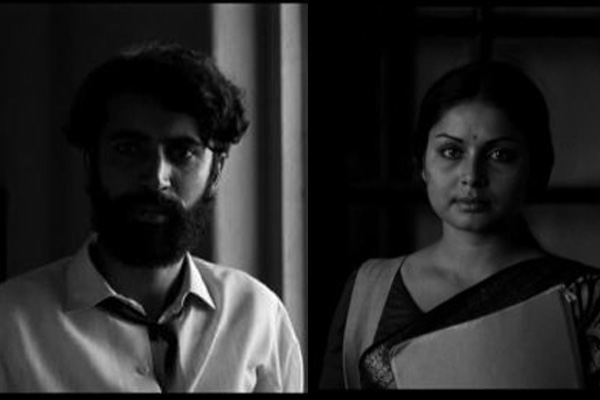
A short soul searching trip to the city of lights and salvation, Varanasi, did little good and Sanjay returns to the debris in Bombay for a last time, only to acknowledge the wreckage. The movie ends on the philosophical note of futility and perpetual inertia of life despite being in continuous motion, both in and out of our mind. Sanjay stands as an anti-hero to the typical Bollywood hero archetype and reflects the stark realities the mainstream movies cover up with fantasy and melodrama. Kaul surgically portrays the evolution of the relationship between a young couple in the thriving Bombay of the mid-70s.
The city appears and takes part in the narration as a vibrant character through elaborately canned handheld shots. The crowd shots of VT station in the peak hours are a marvel and capture mundane daily life at its orgasmic best. Kaul devises a visual language, which is immediate, intrinsic and intense at the same time. Apurba Kishore Bir’s stunning cinematography helps to depict the sharp, contrasting realities in human life. Kaul punctuates his narrative with occasional jump cuts, freeze frames panic zoom-ins, and zoom-outs, which give the movie its characteristic rhythm. His use of background score and the highly playful song “Chuk chuk chuk karti gaadi” also reveal a filmmaker who knows his craft and vision. The recurring motifs, railroads, railway stations and running trains are placed in the structure with precision.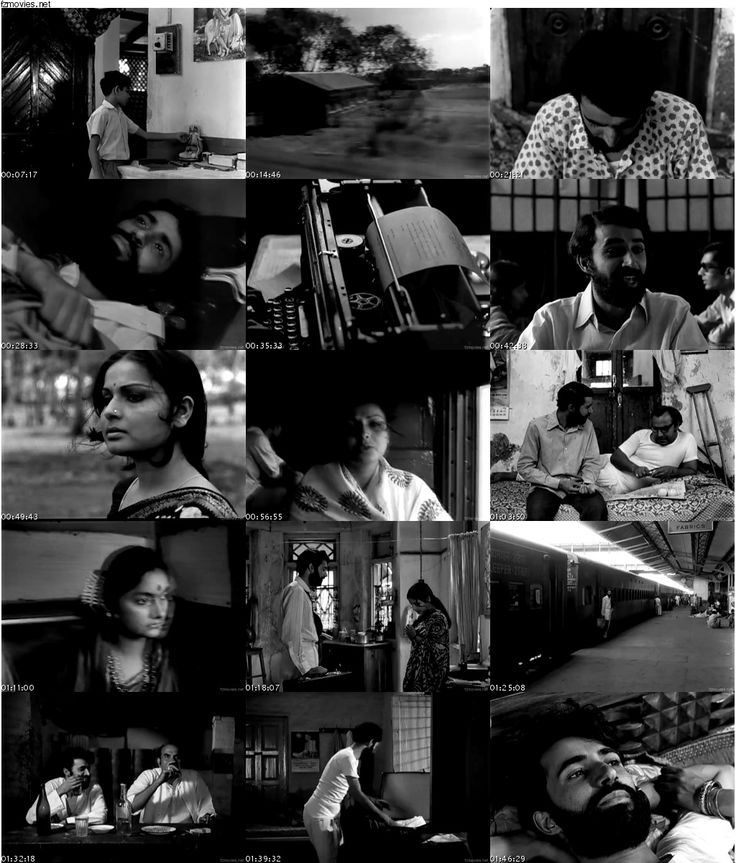
In the 70s, such a lyrical and microscopically portrayal of a man’s journey into the fragmentation of self, against a backdrop of all-devouring time and urbanity, was a rarity in Indian Cinema. And most importantly, Kaul, like a true auteur, nurtures a resonating silence at the core of the movie with visuals, natural sounds, and music. The movie bagged two prizes, Best Hindi Film and Best Cinematography, at the National Film Awards, 1975.
Kumar Shahani, A Forgotten God And A Misplaced Image
On the eve of the official confirmation of National Award came, Kaul had a tryst with destiny when a double drowning tragedy happened on the shores of Bombay. According to reports, the 26-year-old Kaul was swallowed by the Arabian Sea in an attempt to save his friend, who was found dead later on the same shore and was fished out of the sea by fishermen. When the hospital authorities pronounced him dead, only a few hours were passed after declaring the two awards his debut movie bagged. In the last shot of the movie, we see an obscured Sanjay squeezed himself in a crowded train compartment, overlooking Kurla railway station, where some of his amorous memories linger, and the monologue says over a frozen close-up of Sanjay, “Now I have neither to run or to return, now I don’t want to reach anywhere. I just wish to walk” and the screen fades into snowy white, like human memory. Making a movie was like losing a self for Awtar Krishna Kaul and Indian Cinema yet to fill the huge gap of his second, third, fourth, or Nth movie, which he couldn’t make within the short term.
Written By: Ragesh Dipu

